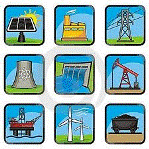Department of Agricultural Economics: Undergraduate Research
Date of this Version
Fall 12-15-2015
Document Type
Article
Citation
Op-Ed from ENSC 230. Energy and the Environment: Economics and Policy, University of Nebraska-Lincoln, Department of Agricultural Economics, Fall 2015
Abstract
The United States is a driving force of the global economy and a major innovator in the technology sector. For decades the world has looked to The United States as a leader of great technological advancements with the strong economy to allow investors a chance make these technologies a reality. So why is it now that we lag behind other countries when it comes to making our technology energy efficient? Sure we’ve been steadily growing our production of renewable resources with wind and solar energy, bet we are still behind in the second largest source of pollution, transportation. According to the EPA, transportation accounts for 27% of total U.S. greenhouse gas emissions, lead only by electricity production. Since 1975, following the Arab oil embargo, the U.S. government has regulated vehicles through Corporate Average Fuel Economy (CAFE) standards. The purpose of these standards is to improve the average fuel economy of vehicles made in the U.S. From 1990 until 2010, the standard for passenger vehicles was 27.5 miles per gallon. For 20 years our emissions requirements were stagnant. Meanwhile, in 2010 the European Union had requirements 41 mpg and Japan had requirements of 46 mpg. In addition, the United States also trailed behind China, Canada, and India in vehicle standards as of 2010. These CAFE standards aren’t just good for reducing overall greenhouse gas emissions. When vehicles require less gasoline, it reduces our overall consumption. This is great news for people who want to reduce the United States dependence on foreign oil, and was the main purpose behind the CAFE standards being introduced in the first place. Increasing vehicle efficiency will improve our nation’s energy security and save drivers money when filling up at the pump. It’s for these reasons that I believe the U.S. needs to continue increasing the efficiency of our vehicles. The U.S. has set the standard for 2016 at 37.8 mpg, and proposed a 56.2 mpg standard in 2025. While it is a step in the right direction, perhaps we need to be doing more if we want to be world leaders once again. We need to set an example to the world that efficient vehicles are not only economically feasible, but necessary to reduce energy consumption and pollution on a meaningful scale.
Included in
Environmental Indicators and Impact Assessment Commons, Natural Resources and Conservation Commons, Oil, Gas, and Energy Commons, Other Environmental Sciences Commons


Comments
Copyright (c) 2015 Derek Baylog